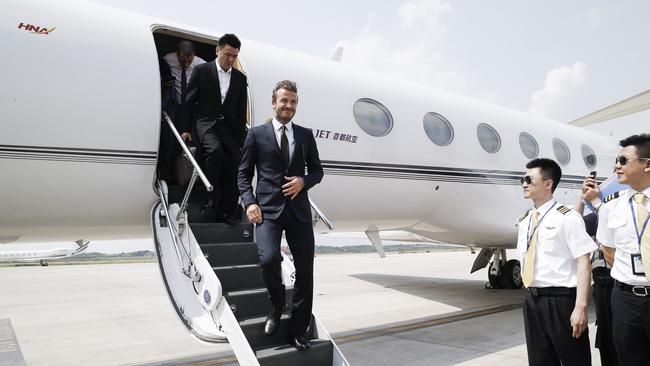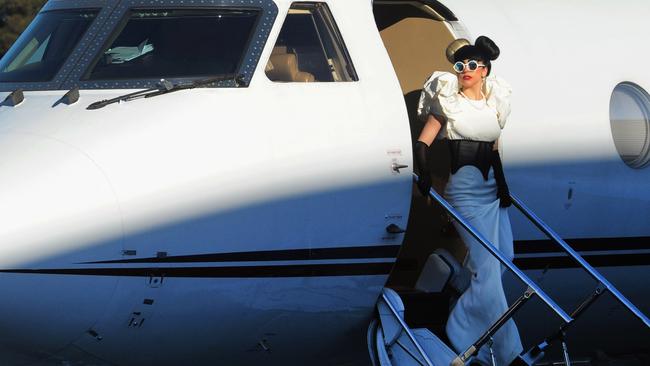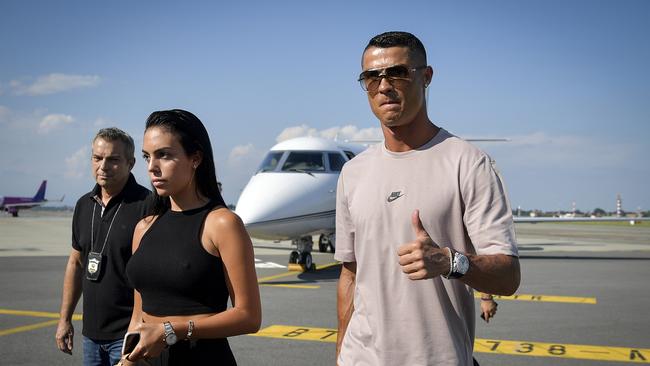Jet-setters take carbon emissions to new heights in Britain
Britain has become the private jet capital of Europe, with more carbon emissions than any other nation, a report found this year.

Like a general moving troops around a map, Rohan Mark Jayawardene is planning a huge logistical operation.
“We have 40 movements involving UK airports between Friday and Monday,” says the chief executive of charter flight company Diamonte Jets.
The stars had aligned and he needed to move rich passengers from Britain to the Cannes Film Festival and the Monaco Grand Prix, which overlapped this year. He then had to deliver West Ham fans to Prague, and Manchester City supporters to Istanbul before the week was out.
His standards are high. “We’re big believers in the private element of private aviation,” he says. “Everything is very discreet, and everything is tailor-made.”
Like many private airlines, Jayawardene’s business is booming. Never mind the climate emergency: the private jet has survived – and flourished – as the ultimate status symbol. Even British Foreign Secretary James Cleverly embarked on an eight-day tour of the Caribbean this month in a Succession-style Embraer Lineage 1000E, costing the taxpayer just over £10,000 ($19,000) an hour.
Britain has become the private jet capital of Europe, with more carbon emissions than any other nation, a report found this year.

To fly is to be free. Harriet Quimby, who in 1912 became the first woman to fly across the English Channel, wrote of her first flying lesson: “I felt as much as a child feels when riding a sled downhill.”
But today, the process of boarding an aircraft is anything but free. Instead it involves a series of confinements from check-in to security, departure gate, then through hermetically sealed plane doors.
The private jet experience tears up that process. For one thing, the terminals are smaller. At Farnborough airport in Hampshire – the busiest private jet airport in Britain – the VIP terminal has a gym and a concierge. You drive up, put your bags on a scanner and walk straight through to a lounge. Within 20 minutes, your captain will walk you to your plane.
The super-rich can do away with terminals altogether. Christopher Williams-Martin, chief executive of FlyEliteJets, can get you a limo to the plane’s steps.
“Some airports do require entry via the terminal but we can usually get airline clearance for to-jet boarding,” he says. “We pre-clear them for immigration then collect them in a limo and take them directly to the aircraft.”

The obvious reason that private airlines have done so well in Britain – aside from its island geography – is the proliferation of rich people. For business users, the greatest saving is time.
“The mindset has changed now,” Williams-Martin says.
“Previously, if you had meetings in Europe, you’d spend an extended stay. There would be a tiny bit of business and a large amount of golf involved. Now people want to get the business done and jet out to be back home with their families.”
This, he says, is a post-Covid thing. Indeed, the recent private jet boom owes a lot to the pandemic. Civilian flights were grounded in 2020 and data from the Eurocontrol aviation organisation shows that charter and business flights were much quicker to recover when flights were allowed to resume in 2021-22. Scheduled flights have still not recovered to their 2019 peak.
“Once you fly private once, you don’t want to go back,” suggests Clive Chalmers, vice-president of the charter team at Air Partner, a company that began as a pilot training outfit in the 1960s.
As well as their regular business clients, Air Partner increasingly deals with one-off bookings – perhaps friends clubbing together for football matches or special celebrations. “There’s not much we haven’t seen,” he says. “We have every request from drinks served at exactly the right temperature to providing McDonald’s or KFC in-flight.”
For a return journey, from Farnborough to Nice, FlyEliteJets’ mobile app offers a propeller-powered Britten-Norman BN-2 Islander at £12,000 for eight people. The journey will take about 4½ hours.

Another popular route is Luton to Paris, offered by most private airlines for about £5000 – a price that, split with enough friends, might just be doable in three figures. The trip typically lasts 52 minutes, about 80 minutes shorter than the Eurostar train journey.
Herein lies the embarrassing truth about private jet flights: most of them are short-lived. Of the 134,000 private flights made in the past 12 months, 29 per cent took an hour or less. About 8000 flights were less than half an hour door-to-door.
It is easy to explain away the carbon emissions of private aviation. Air travel causes 2.5 per cent of all global emissions, with private flights producing 1 per cent of that total. Yet frequent flyers produce an overwhelming majority of air travel’s CO2 emissions.
On a per-person basis, perhaps the most polluting thing you can do is fly in a private jet. The average private flight leaving a British airport last year produced about five tonnes of CO2. The typical European person produces about eight tonnes in an entire year.
The backlash against private jets is under way: Amsterdam’s Schiphol Airport has announced it will ban private jets from 2025.
Yet changing attitudes towards climate change have done little to deter celebrity passengers from boasting about private jets.
Mr Chalmers is also confident that he can retain the new jetsetters who tried their services during Covid. “There’s a new market for private travel, and we’ve tapped into that,” he says. “Those passengers will be here to stay.”
The Times



To join the conversation, please log in. Don't have an account? Register
Join the conversation, you are commenting as Logout